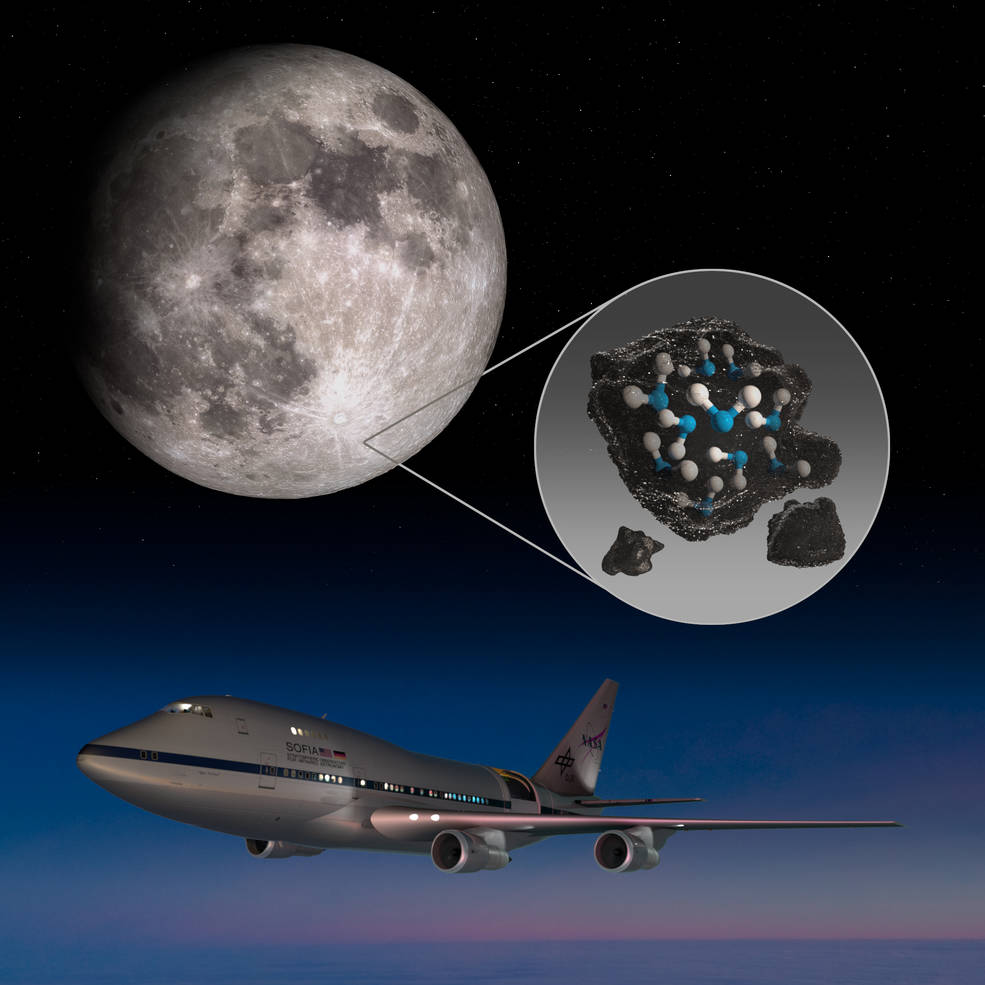SOFIA has found water molecules (H2O) in Clavius Crater on the Moon’s southern hemisphere, one of the largest craters visible from Earth. Previous Moon surface observations found some type of hydrogen but were unable to discriminate between water and its chemical cousin, hydroxyl (OH).
Water in concentrations of 100 to 412 parts per million – about comparable to a 12-ounce bottle of water – is trapped in a cubic metre of soil strewn across the lunar surface, according to data from this site. The discoveries were recently reported in Nature Astronomy.
The discovery was made by researchers at the University of Colorado Boulder in an article published in The Planetary Science Journal.
Rapidly emerging evidence suggests that the moon has more water than expected, hidden in shady pits at both poles.
Research suggests that much of this water may have come from massive volcanic eruptions, from which lava flows created pits on the moon’s surface, and where water vapour accumulates. They are frozen at latitudes.
The leading author of the dissertation, Andrew Wilkowski, a graduate student in astronomy and planetary sciences, and the University of Colorado said in a statement: “We see it (water) as ice on the moon that has accumulated over time.”
Over a long period, there could have been layers of snow dozens or even several feet thick. This is good news for astronauts conquering the moon and relying on local resources, who will only have to remove the moon’s dust to get this (water).
Paul Hahn, the co-author of the study and assistant professor of astrophysics and planetary science, said in a statement: “It is possible that you could access large layers of ice five or 10 meters below the surface of the moon. We need to drill and find it. ”
Recent evidence points to an even more hydrated moon than scientists expected.
In a study published in 2020, NASA stated that ice containing water on the moon can be melted in the shade, even in sunny areas, rather than evaporating in the extreme heat of the sun. The source of the water ice, however, is unknown.
[embedpost slug=”china-linked-twisted-panda-was-discovered-snooping-on-russian-defence-research-and-development/”]





















